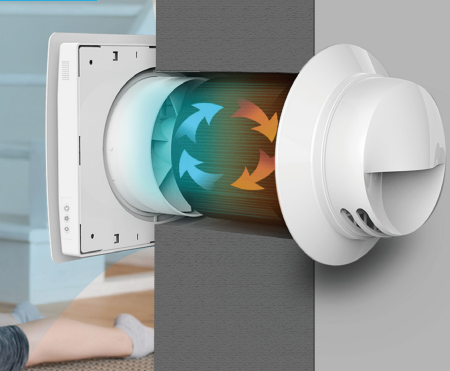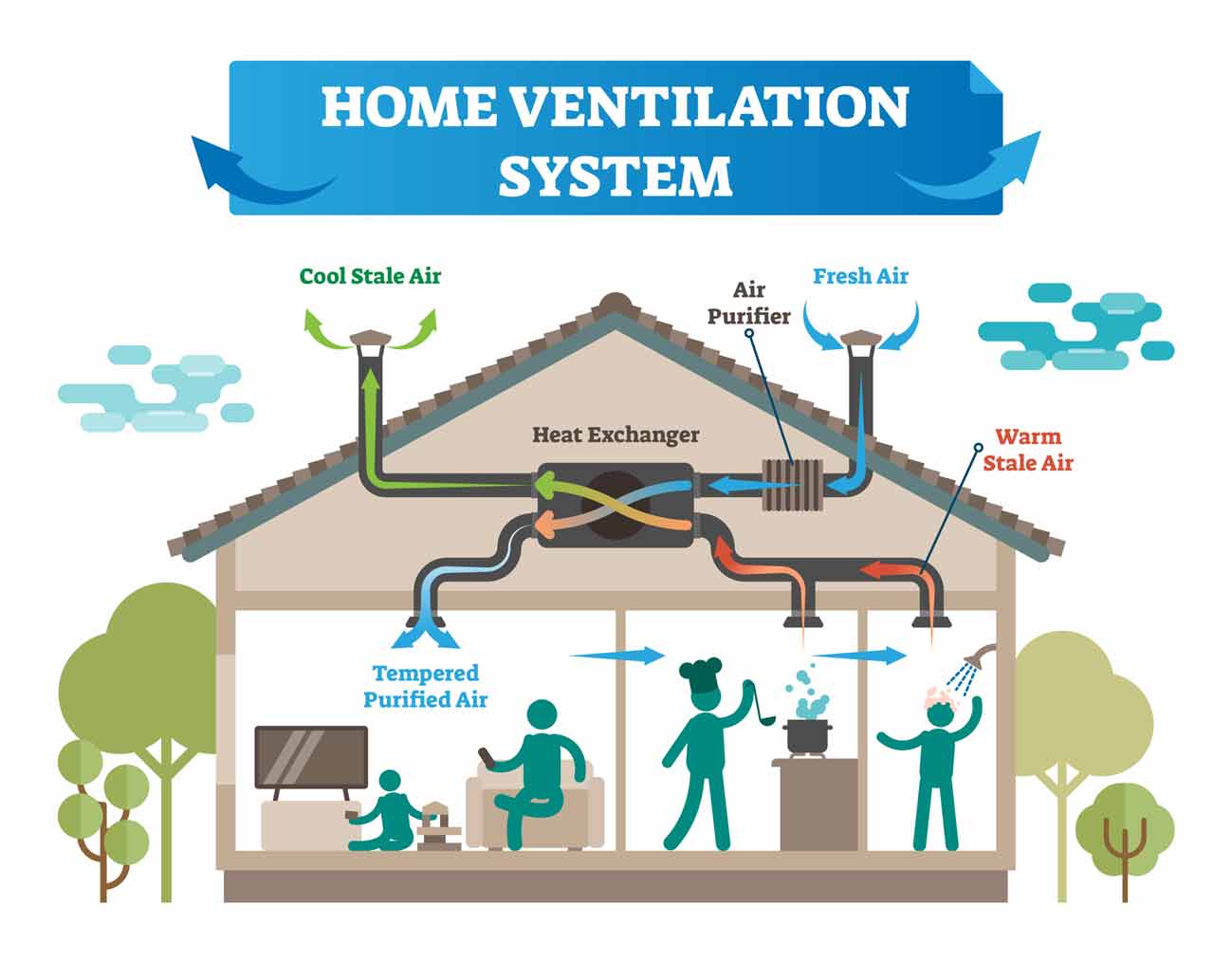Discovering the Perks of Heat Recovery Ventilation for Power Efficiency in Homes
Heat Recovery Ventilation (HRV) systems offer property owners a functional method to enhancing energy efficiency. By reclaiming heat from outward bound air, these systems can substantially minimize cooling and heating costs. In addition, they supply a steady supply of fresh air, boosting indoor air top quality and comfort degrees. As home owners take into consideration sustainable choices, comprehending the nuances of HRV systems ends up being progressively crucial. What elements should one assess before making such an investment?
Understanding Heat Recovery Ventilation Solutions

Exactly How HRV Enhances Indoor Air High Quality

Power Cost Savings: The Financial Advantages of HRV
Taking full advantage of energy efficiency, heat recovery ventilation (HRV) systems offer significant monetary advantages for house owners. By recouping and recycling heat from exhaust air, HRVs noticeably decrease cooling and heating costs. This technology can bring about energy savings of up to 30%, depending on climate and use patterns. Homeowners frequently observe decreased energy costs shortly after setup, making HRVs a financially smart investment with time. In addition, several areas provide incentives or discounts for energy-efficient upgrades, better improving the financial allure. As power prices proceed to increase, the cost-effectiveness of HRVs becomes increasingly clear. Generally, the consolidation of HRV systems not only advertises power performance however also adds to long-lasting financial cost savings for households.
The Environmental Effect of Heat Recovery Ventilation
A considerable environmental advantage of heat recovery ventilation (HRV) systems depends on their capacity to decrease overall power consumption. By redeeming heat from exhaust air and transferring it to inbound fresh air, HRV systems pop over to these guys minimize the requirement for energy-intensive home heating and cooling down methods. This decrease learn the facts here now in energy demand contributes to decrease greenhouse gas emissions, as less nonrenewable fuel source is called for to keep comfy interior temperature levels. In addition, HRV systems boost interior air high quality by efficiently exchanging stagnant air with fresh exterior air, decreasing dependence on mechanical air conditioning systems that can damage the setting. Overall, the implementation of HRV systems supports lasting living techniques and lines up with worldwide efforts to fight climate adjustment by advertising power performance in domestic settings.
Choosing the Right HRV System for Your Home
Exactly how can home owners ensure they pick the ideal heat recovery ventilation (HRV) system for their demands? First, they ought to examine their home's dimension and layout, as these elements influence airflow requirements. Next, examining the system's performance scores is crucial, as higher ratings show far better efficiency and power financial savings. Homeowners need to additionally take into consideration setup and maintenance costs, contrasting various brands and models for worth. Furthermore, it's crucial to evaluate sound levels, as some systems run more quietly than others. Consulting with cooling click this site and heating professionals can supply customized referrals based upon particular home problems. Lastly, taking a look at user testimonials and guarantees can assist in making an educated choice, making sure that the selected HRV system properly improves interior air top quality and energy performance.
Often Asked Concerns

Exactly how Frequently Should I Tidy or Keep My HRV System?
The regularity of cleaning or keeping a heat recuperation ventilation (HRV) system commonly depends on use and environmental aspects. Typically, it is advisable to do maintenance every 6 months to guarantee peak efficiency and air quality.

Can HRV Equipments Help In Reducing Moisture Degrees Indoors?
HRV systems can efficiently minimize interior moisture degrees by exchanging stale, humid air with fresh, drier air from outdoors. HRV Heat Recovery Ventilation. This process helps keep a balanced indoor environment, boosting convenience and avoiding moisture-related problems
What Is the Life-span of a Common HRV System?
The life expectancy of a typical heat recovery ventilation (HRV) system differs, usually lasting in between 10 to 15 years. Regular maintenance can prolong its performance and functional life, making sure peak efficiency throughout its usage period.
Are There Any Noise Interest In HRV Equipments?
Noise worry about HRV systems can develop, specifically from follower operation. Nevertheless, lots of modern-day devices are designed to minimize sound levels, guaranteeing they operate silently while keeping performance, which resolves potential disturbances in living environments.
Can I Mount an HRV System Myself, or Do I Required an Expert?
The individual contemplated whether to install the heat recovery ventilation (HRV) system directly or work with a professional. Typically, while do it yourself setup is possible, know-how assurances appropriate performance and conformity with neighborhood building ordinance, boosting system performance.